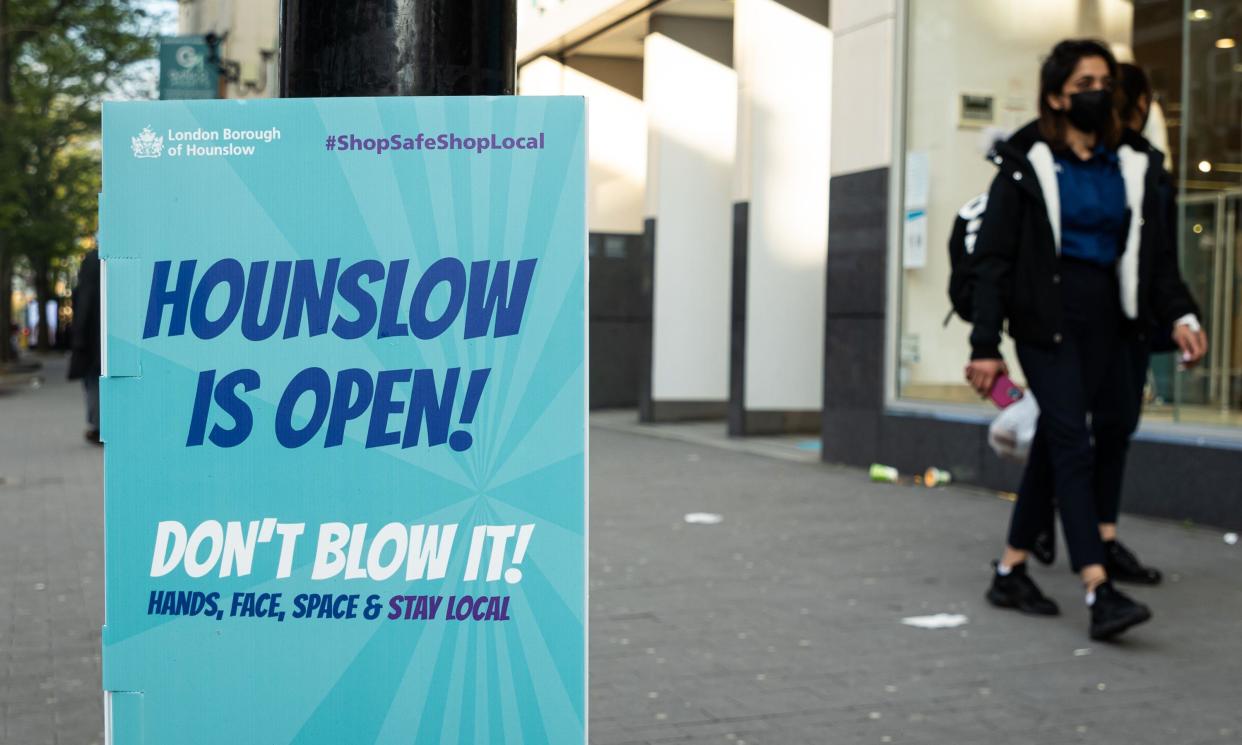Covid in England: what is the impact of lifting restrictions on 21 June?

From face masks to the rule of six, we’ve got used to Covid restrictions over the past 14 months. But next week the government in England is expected to unveil its review of social distancing rules, ahead of the potential full unlocking of society on 21 June. Although it’s unlikely that recommendations on handwashing and ventilation will be dropped, others, such as restrictions on household mixing or the 1-metre-plus rule, could be lifted.
Doing so would help the hospitality and travel industries, allowing pubs, restaurants and other indoor venues to increase their capacity, and more people to travel abroad for work or holidays. However, with coronavirus resurfacing in some areas of the UK, and the rise of new variants, some have questioned whether this is a good idea.
“Right now, I’m not sure we should be thinking of getting rid of any of them, because it doesn’t meet with the government’s fourth test [for moving to the next step of the roadmap], in that we have a variant of concern that’s spreading exponentially in the country,” said Dr Stephen Griffin, a virologist at the University of Leeds. “It’s not a matter of going back into lockdown, but certainly I think we should be pausing.”
As the government weighs up its possible choices, we examine the impact of these various restrictions, and what doing away with them could mean.
Face coverings
Scientists have long cautioned that masks alone will not prevent Covid-19 transmission, and should be combined with physical distancing and handwashing. Their main purpose is to protect other people from larger respiratory droplets produced when we speak, cough or sneeze – although medical-grade filtering facepiece (FFP) masks also protect the wearer because they filter the inflow and outflow of air, and give a degree of protection against smaller droplets or aerosols, depending on the mask’s rating.
“From the perspective of airborne transmission, we have seen over the last year that well-fitted FFP2 masks are very effective in preventing transmission, even in highly contaminated and poorly ventilated environments, or when in close contact with Covid patients,” said Dr Pedro de Oliveira from Cambridge University’s department of engineering. “I believe we should still be wearing face masks at all times in public spaces, most especially indoors.”
The evidence on cloth masks is more mixed, and they provide little individual protection against infectious aerosols. De Oliveira said: “In terms of collective protection and combined with physical distancing, cloth masks helped, to some extent, to mitigate the spread of the virus mostly by preventing the exhaled breath of sick individuals from reaching very long distances and by filtering large droplets that may carry most of the virus.”
Once most people are vaccinated, we can probably do away with masks, but at the moment there is a lack of scientific evidence about how and if vaccinated people can spread the virus – especially more transmissible variants. “Personally, I hope to see people wearing face masks for a little longer, just to be on the safe side,” De Oliveira said.
1-metre-plus
First it was 2 metres, then the recommended safe distance was reduced to “1-metre-plus”, to allow hospitality businesses to cater for more clientele. The risk of transmission increases by 2 to 10 times at 1 metre compared with 2 metres – although that starting risk is much lower in some settings, such as outdoors, than others.
For instance, De Oliveira and his colleagues found it takes just seconds for aerosols to spread over 2 metres when masks are not worn indoors, implying that physical distancing in the absence of ventilation would be inadequate over long exposure times. They have also created an online tool to help people assess the risk of transmission in various indoor settings.
Some scientists have argued against rigid safe distancing rules, claiming they’re oversimplified. They’d prefer graded recommendations to reflect the risks in different contexts.
Rule of six
“I think if you were to relax the rule of six, you should keep the 1-metre-plus rule, because you can very easily have six people from six different households who then go on and meet six other people from six different households,” said Griffin. “Six will, of course, limit the spread, but it is the number of interactions between different households that is the real concern.”
Already, up to 30 individuals are allowed to meet outdoors in England, or up to 50 in Wales. But allowing large groups from different households to gather indoors – without distancing and masks – would be a major change.
Working from home
According to data released by the government’s Scientific Advisory Group for Emergencies (Sage) on Friday, between 20% and 25% of working age adults who became infected with the coronavirus believed they had caught it at work. Clearly, not everybody can choose to work from home, but if you can, it makes sense to continue doing so. “The major issue that we have with this virus is mixing, but particularly mixing indoors – so you absolutely don’t want to get rid of people working from home if possible whilst we still have this potential problem with the [India] variant,” Griffin said.

 Yahoo News
Yahoo News 
